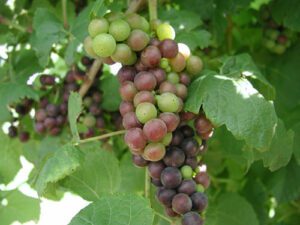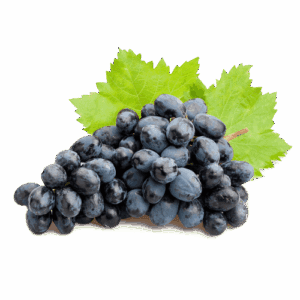St. Vincent Grapes
St. Vincent Grapes are a red wine variety prized for their rich color, balanced flavor, and versatility in winemaking. Though their exact parentage is somewhat uncertain, they are believed to be a hybrid of French-American origin. They are particularly valued in the Midwest for producing high-quality red wines.
General Characteristics
-
Type: French-American hybrid wine grape.
-
Origin: First identified in Missouri in the 1970s; parentage believed to include Vitis vinifera and Vitis labrusca influences.
-
Flavor: Produces wines with berry and cherry notes, sometimes compared to Pinot Noir or Chambourcin.
-
Seeds: Yes, they are seeded.
-
Use: Primarily for red and rosé winemaking; rarely used as a table grape.
Growth & Harvest
-
Ripening: Mid-season, typically in September.
-
Vine: Vigorous and moderately hardy; performs well on fertile soils.
-
Clusters: Medium-sized clusters with small to medium dark blue berries.
-
Cold Hardiness: More cold tolerant than Vitis vinifera, suitable for Midwest climates.
-
Disease Resistance: Moderate resistance to some fungal diseases, though good vineyard management is important.


Advantages
-
Produces versatile, high-quality red wines with soft tannins and good color.
-
Adapts well to Midwest growing conditions.
-
Offers a flavor profile reminiscent of traditional European varieties.
-
Can be used in blends or as a varietal wine.
Disadvantages
-
Less cold hardy than some American hybrids like Marquette.
-
Requires careful vineyard management for best fruit quality.
-
Not typically suited for fresh eating or non-wine uses.
If you’re looking for a red wine grape that combines American hardiness with European-style flavor, St. Vincent is an excellent choice for Midwest vineyards.
